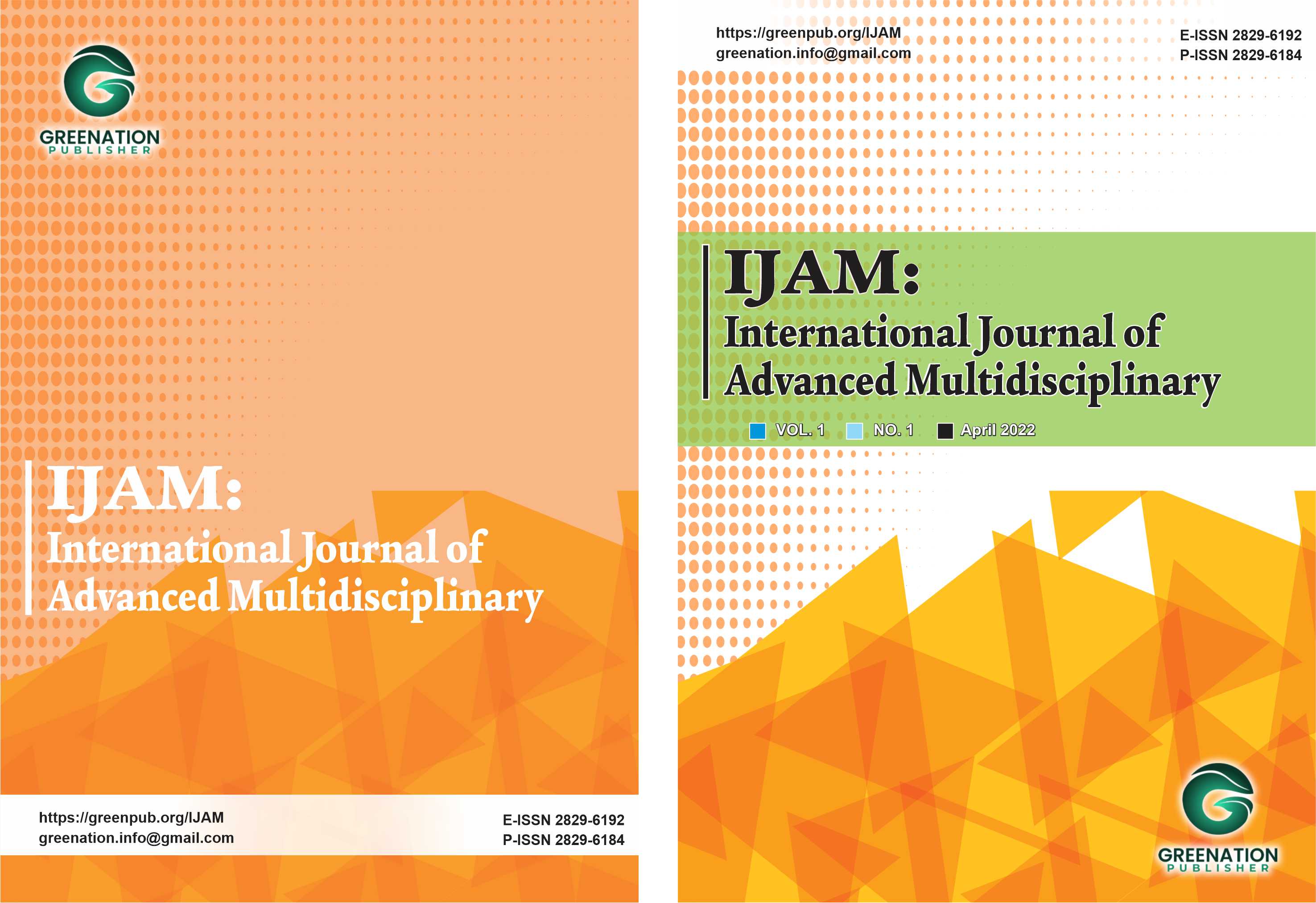Analysis of Water Resources Management Using The Dpsir Framework: Driver Pressure State Impact Response for River Water Pollution in Cilamaya Watershed
DOI:
https://doi.org/10.38035/ijam.v3i2.660Keywords:
Cilamaya Watershed (DAS), River Water Quality, Pollution Load, Driving Force Pressure State Impact Response (DPSIR)Abstract
The availability of water in adequate quality is a crucial requirement for achieving various aspects of life, including human health, ecosystem, economy, social and environmental sustainability. This study analyzes the impact of land cover changes on water quality in the Cilamaya Watershed (DAS Cilamaya) using Qual2Kw and GIS modeling for the 2019-2023 period. The Cilamaya Watershed is closely related to the development of the north coast (Pantura Route), and the increasing number of development activities that have resulted in the increasingly concerning condition of the watershed. This condition is characterized by the presence of quite extensive critical land, and also river water pollution due to domestic waste from households, livestock, industry, and agriculture. Analysis of the effect of land cover on water quality show a positive correlation between the increase in settlement area and BOD concentration (r = 0.348–0.692) and TSS, particularly in segment 2 (r = 0.83944). Conversely, DO shows a negative correlation with settlements and plantations (r = -0.51 to -0.92), indicating that urbanization and plantation expansion negatively impact dissolved oxygen levels, while rice fields increase TSS with a correlation value (r = 0.2–0.593). The Driving Force – Pressure – State – Impact – Response (DPSIR) approach highlights the importance of managing green vegetation areas as a key measure in mitigating pollution and improving water quality in the Cilamaya Watershed, as well as in maintaining the overall balance of the ecosystem.
References
Ali Azarnivand & Nastaran Chitsaz. 2015. Adaptive policy responses to water shortage mitigation in the arid regions—a systematic approach based on eDPSIR, DEMATEL, and MCDA. Springer International Switzerland. DOI 10.1007/s10661-014-4225-4.
Council Sirak, Robele Garia, Cesar E. Ortiz Guerreroe, Bryann A-Uribee, John D. Icelyc,Alice Newton. 2018. A DPSIR-analysis of water uses and related water quality issues in the Colombian Alto and Medio Dagua Community Council. https://doi.org/10.1016/j.wsj.2018.06.001.
Dechao Chen, Acef Elhadj, Hualian Xu, Xinliang Xu and Zhi Qiao. 2020. A Study on the Relationship between Land Use Change andWater Quality of the MitidjaWatershed in Algeria Based on GIS and RS. Sustainability 2020, 12, 3510; doi:10.3390/su12093510
Ghritartha Goswami, Sameer Mandal, Sudip Basack, Rishika Mukherjee and Moses Karakouzian. 2023. Assessing the Impacts of Land Use and Land Cover Changes on the Water Quality of River Hooghly, West Bengal, India: A Case Study. https://www.mdpi.com/journal/hydrology, https://doi.org/10.3390/hydrology10030071
John Peter Obubu, Robinson Odong, Tena Alamerew, Tadesse Fetahi and Seyoum Mengistou. 2022. Application of DPSIR model to identify the drivers and impacts of land use and land cover changes and climate change on land, water, and livelihoods in the L. Kyoga basin: implications for sustainable management. Environmental Systems Research, Springer Nature. https://doi.org/10.1186/s40068-022-00254-8
Jamal Mosaffaie, Amin Salehpour Jam, Mahmoud Reza Tabatabaei, Mahammad Reza, 2021. Trend assessment of the watershed health based on DPSIR framework. Elsevier Ltd. https://doi.org/10.1016/j.landusepol.2020.104911.
Mahsa Malmir, Saman Javadi, Ali Moridi, Aminreza Neshat, Babak Razdar. 2021. A new combined framework for sustainable development using the DPSIR approach and numerical modeling. https://doi.org/10.1016/j.gsf.2021.101169.
Naveedh Ahmed S. 1, Le Hung Anh and Petra Schneider. 2020. A DPSIR Assessment on Ecosystem Services Challenges in the Mekong Delta, Vietnam: Coping with the Impacts of Sand Mining. Sustainability 2020, 12, 9323; doi:10.3390/su12229323 .
Naveedh Ahmed S. 1, Le Hung Anh and Petra Schneider. 2020. A DPSIR Assessment on Ecosystem Services Challenges in the Mekong Delta, Vietnam: Coping with the Impacts of Sand Mining. Sustainability 2020, 12, 9323; doi:10.3390/su12229323 .
Seyed Hamidreza Sadeghi, Mostafa Zabihi Silabi, Hossein Sarvi Sadrabad, Mohammadreza Riahi. 2022. Watershed health and ecological security modeling using anthropogenic, hydrologic, and climatic factors. Natural Resource Modeling. 2023. DOI: 10.1111/nrm.12371.
Wenming Cheng, Jing Zhu, Xiaochun Zeng, Yuan You, Xuetao Li and Jun Wu. 2023. Water Resources Carrying Capacity Based on the DPSIRM Framework: Empirical Evidence from Shiyan City, China. https://doi.org/10.3390/w15173060 .
Zengliang Luo, Quanxi Shao, Qiting Zuo, Yaokui Cui. 2020. Impact of land use and urbanization on river water quality and ecology in a dam dominated basin. Journal of Hydrology 584 (2020) 124655. DOI : https://doi.org/10.1016/j.jhydrol.2020.12465 .
Downloads
Published
How to Cite
Issue
Section
License
Copyright (c) 2024 Wini Laela Sulastri, Arief Sudradjat

This work is licensed under a Creative Commons Attribution 4.0 International License.
Authors who publish their manuscripts in this journal agree to the following conditions:
- The copyright on each article belongs to the author(s).
- The author acknowledges that the International Journal of Advanced Multidisciplinary (IJAM) has the right to be the first to publish with a Creative Commons Attribution 4.0 International license (Attribution 4.0 International (CC BY 4.0).
- Authors can submit articles separately, arrange for the non-exclusive distribution of manuscripts that have been published in this journal into other versions (e.g., sent to the author's institutional repository, publication into books, etc.), by acknowledging that the manuscript has been published for the first time in the International Journal of Advanced Multidisciplinary (IJAM).























